It is crucial that customers can easily and quickly find the products they are looking for. Often, customers do not know the exact name of a product, which can lead to frustration if they cannot find it. In this tutorial, you will learn how to implement a fuzzy product search using the OpenAI API. We will use a trick to ensure that even similar or incorrect product names successfully lead to the right products.
Main Insights
- The standard search requires exact matches of product names.
- A fuzzy product search can be implemented by returning all product names if the exact match fails.
- The AI can then choose the right one from the similar product names and return the respective product description.
Step-by-Step Guide
To construct a fuzzy product search, follow the steps below.
Step 1: Identifying the Problem
First, we need to identify the basic issue: the search for a product is too exact. If the product name the customer enters does not exactly match the one in the database, the product will not be found. In a previous example, we saw that when entering "en77," no product was found because the actual name was "Nice en 77." A screenshot of this error could be helpful here.
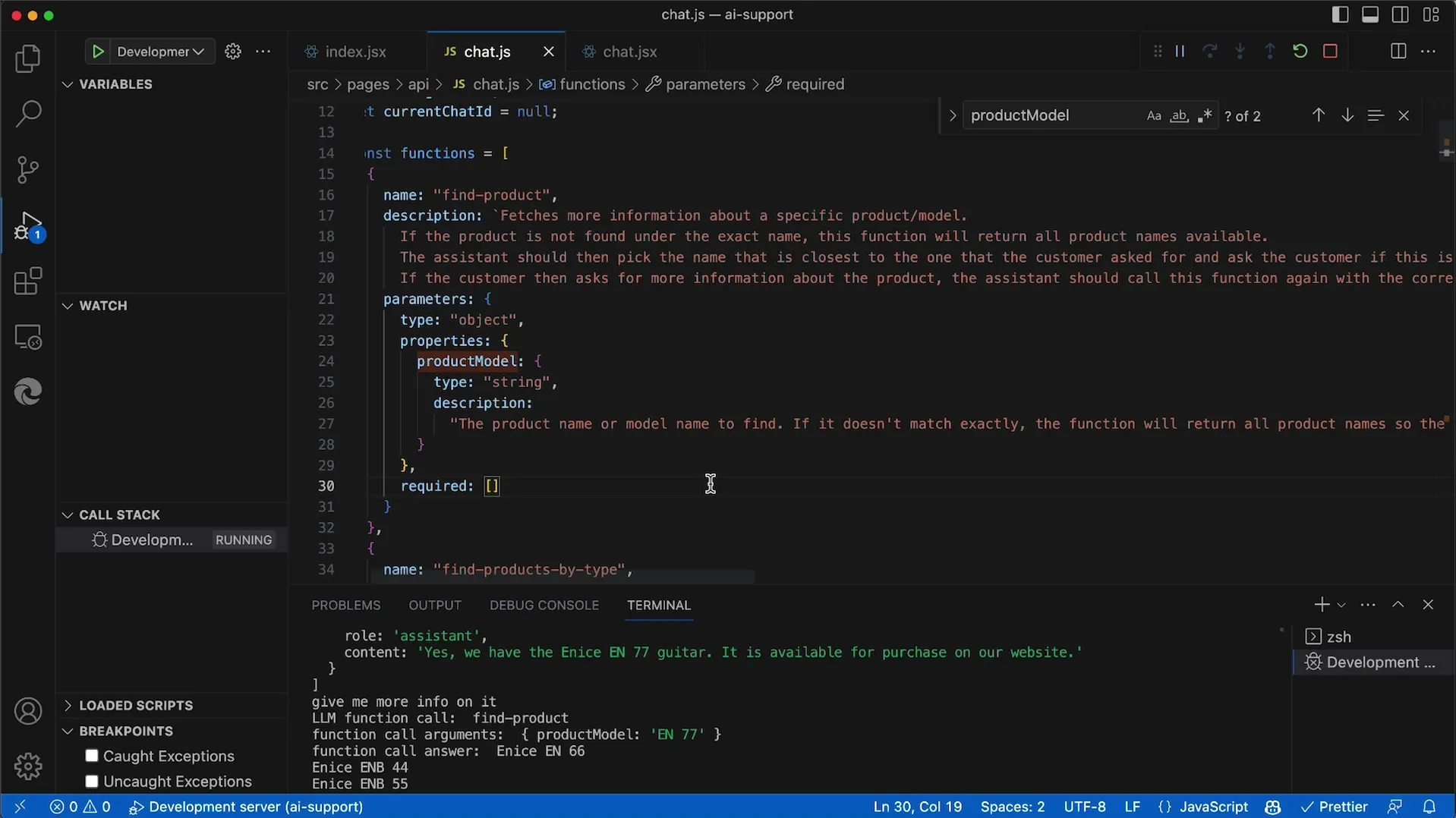
Step 2: Adapting the Search Logic
To solve this problem, we need to change the logic of the product search. We modify the "find product" function to return all available product names if no product is found under the exact name. This ensures that the AI can autonomously search for the closest matching name. Insert the following code into the function's description: "if the product is not found under the exact name, this function will return all product names available." This step helps the AI find the right match when there is no exact name available.
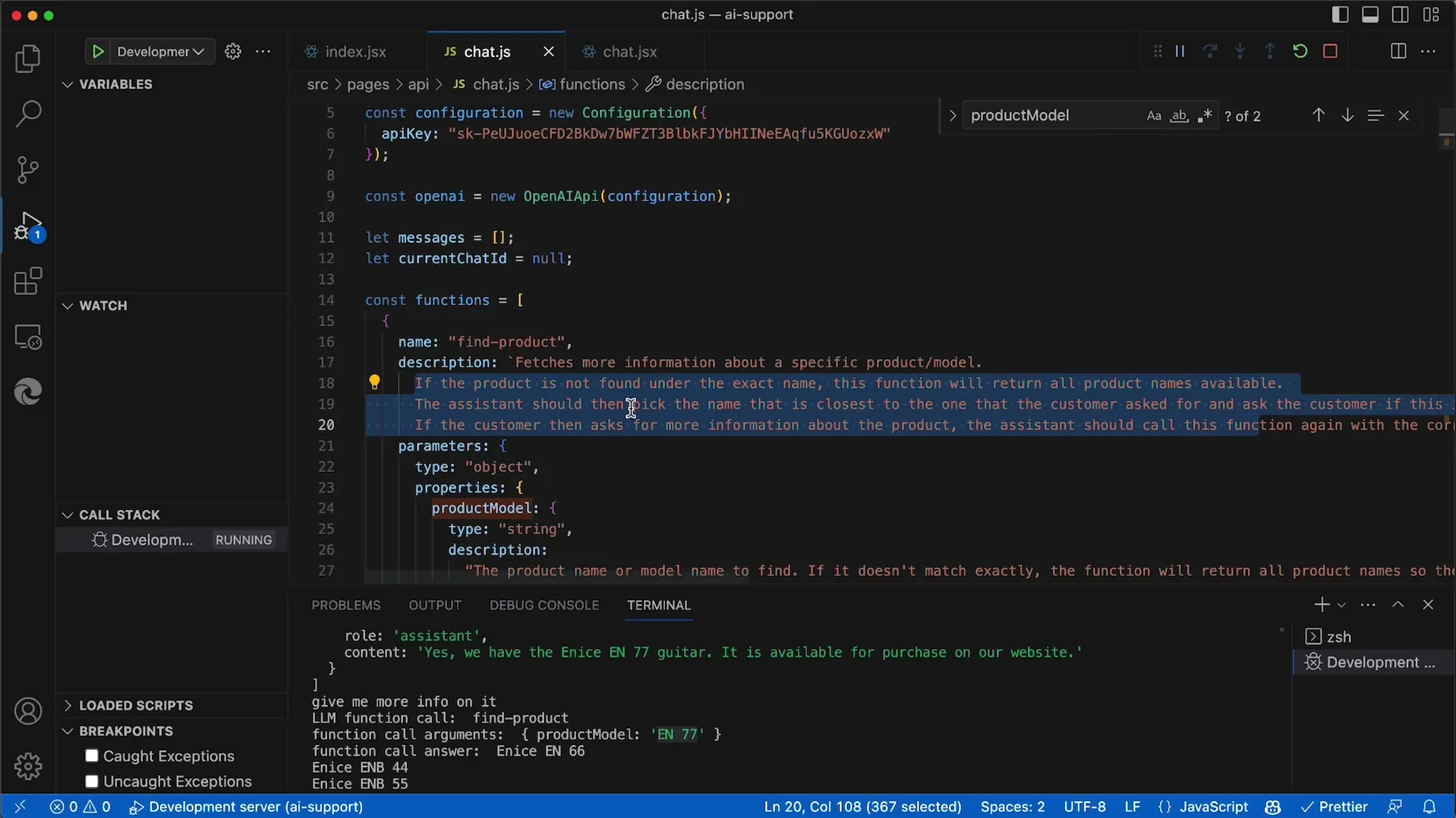
Step 3: Updating Parameter Description
After changing the logic, it is important to also update the parameter description. Use the following phrasing: "the product name or Model name to find." This clearly indicates that the function can also search for similar names if there is no exact match.
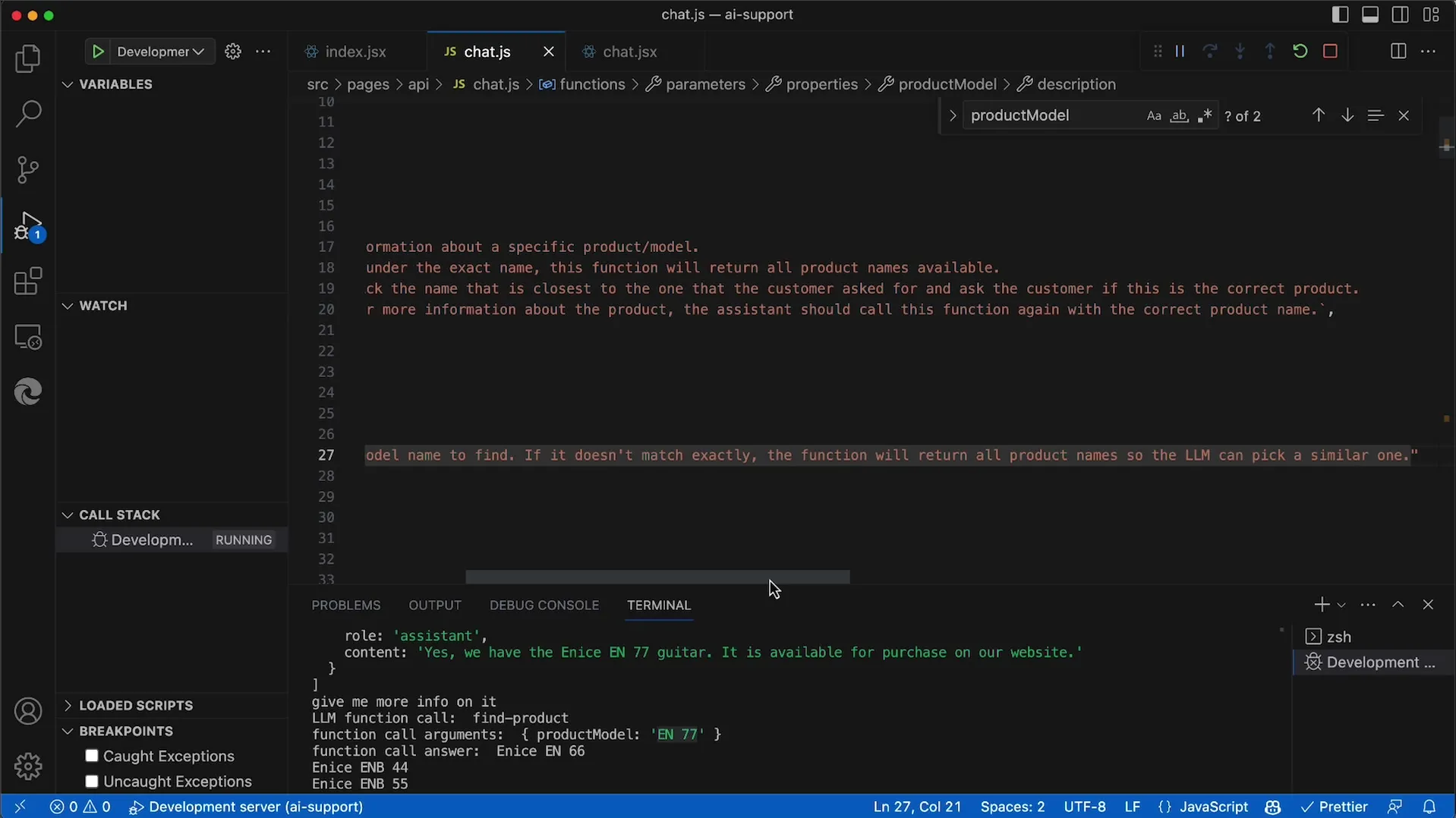
Step 4: Adjusting Function Calls
It is necessary to change the handling of function calls. If the product name is successfully found and we have the product ID, the description is returned as before. However, if the product name is not found directly, we create an array of product names that includes all keys in the database. This array is then used to make the possible product names visible to the AI, which can then identify the desired match.
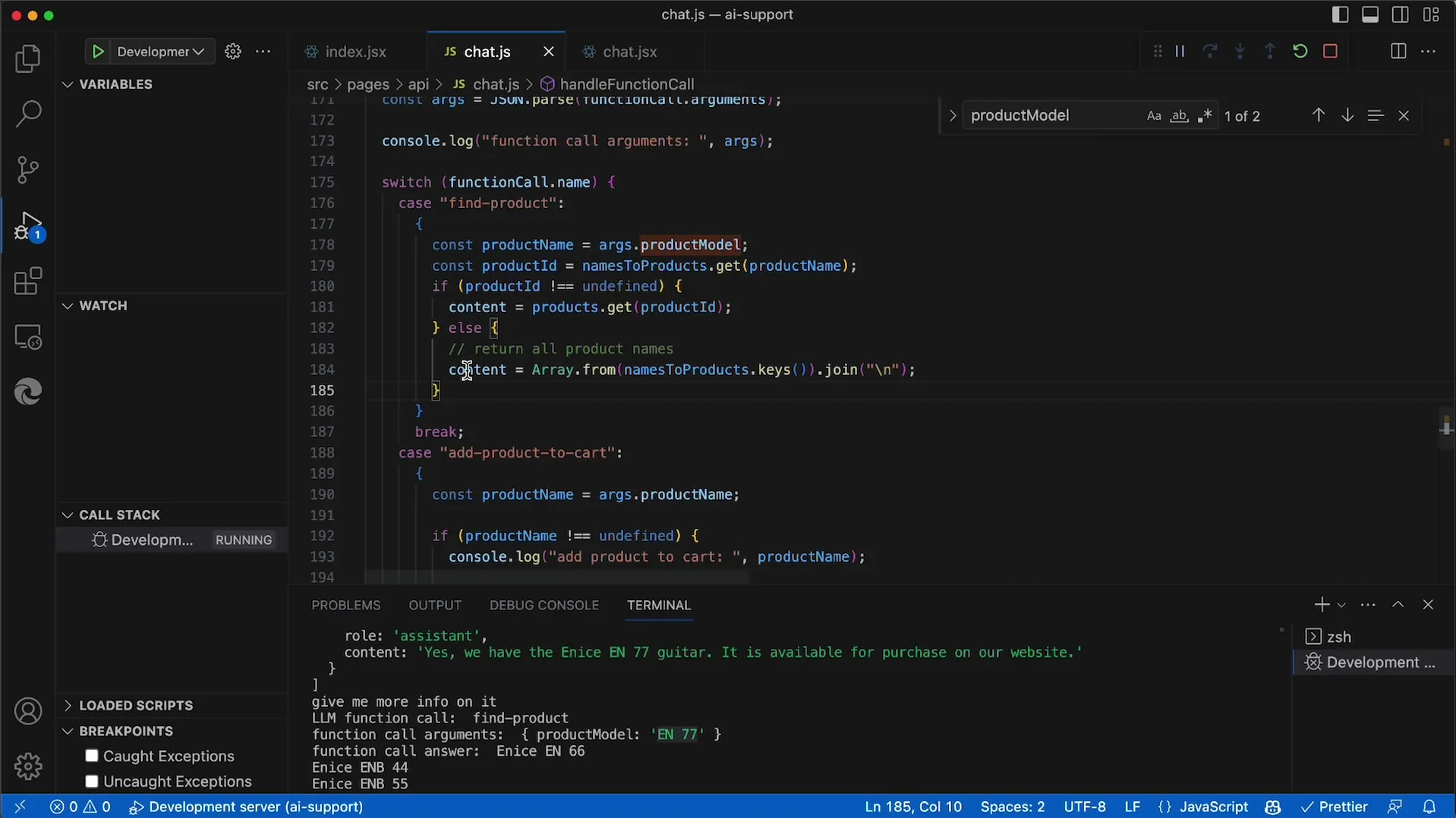
Step 5: Testing the New Logic
After implementing the changes, you should test the new logic. For example, enter "do you have the en77" without spaces and without the full name. This allows you to check if the function is now able to find the correct product. The result should indicate that the product "Nice en77" is available. This is a significant advancement, as the search now works even with fuzzy inputs.
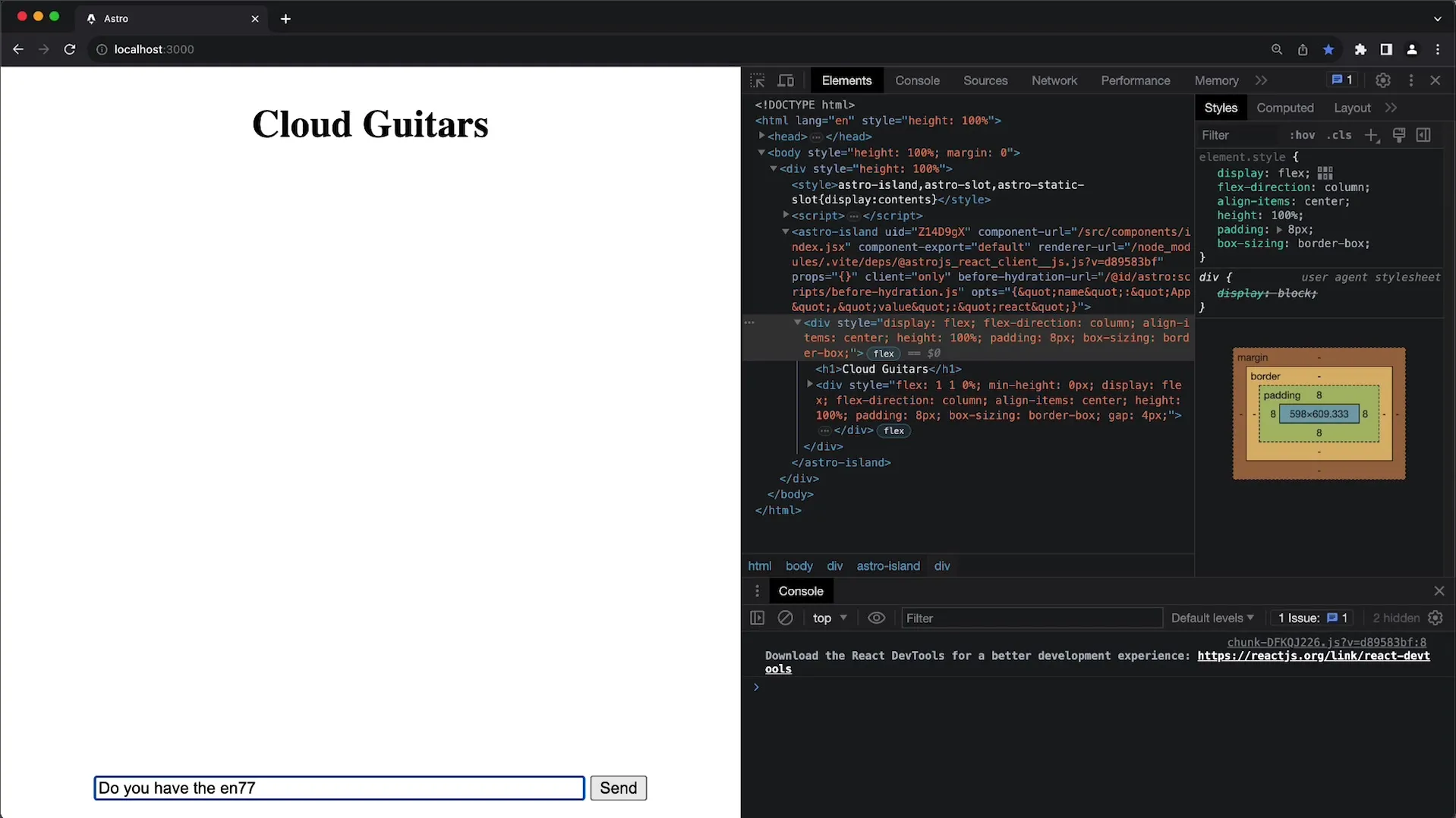
Step 6: Querying Product Description
Now, you can test whether the product description is correctly returned. Ask the AI for more information by saying, "please first give me more information about this guitar." The AI should then provide the corresponding description based on the found product name. This shows that the logic is working and providing the right information.
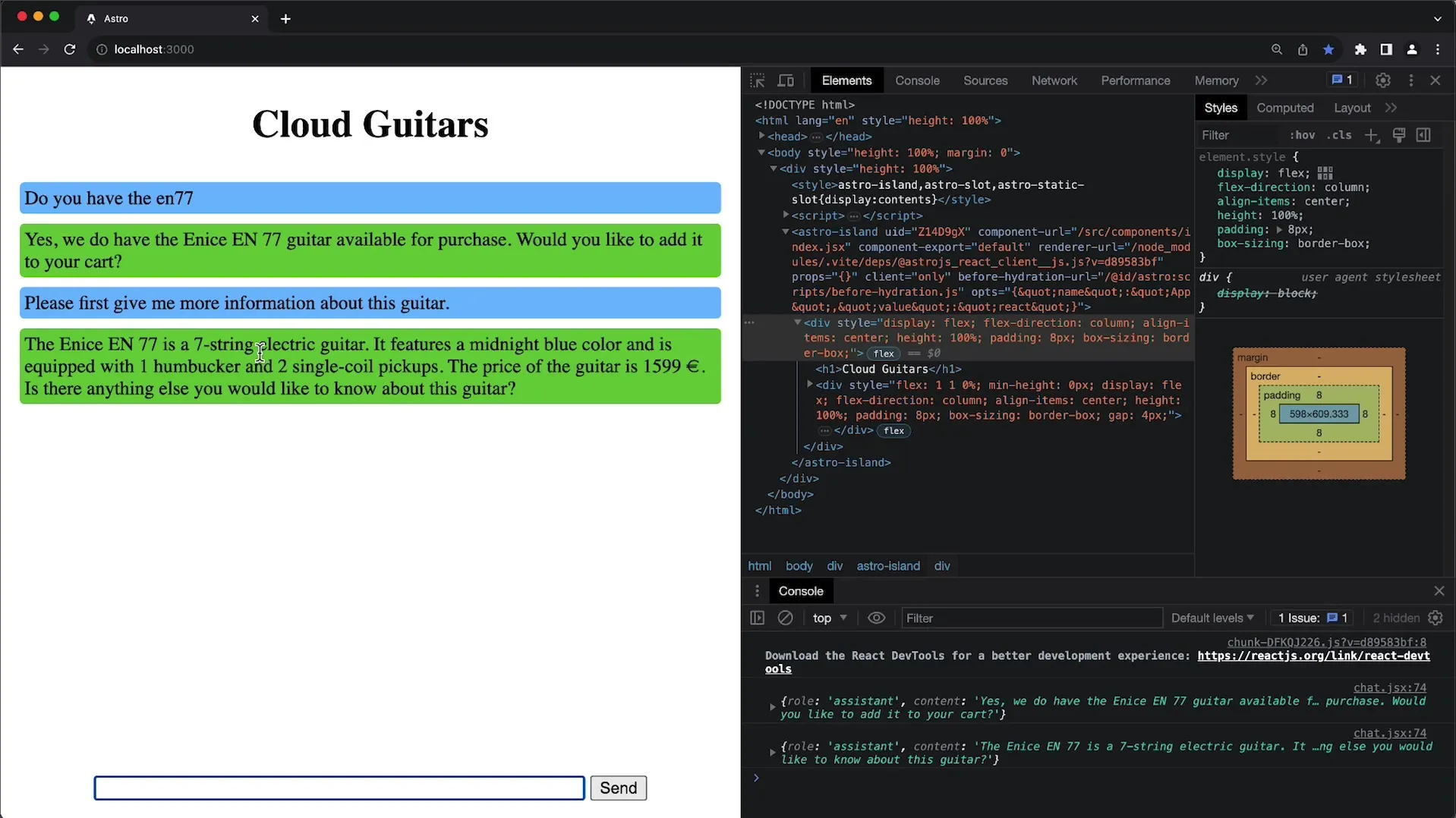
Step 7: Adding to Cart
After you have received the description, you can try to add the product to the shopping cart. Use the command: "add my Shopping Card". This function should now run smoothly without any issues, and the product should be added to the shopping cart correctly. This also demonstrates that the entire communication structure is functioning correctly.
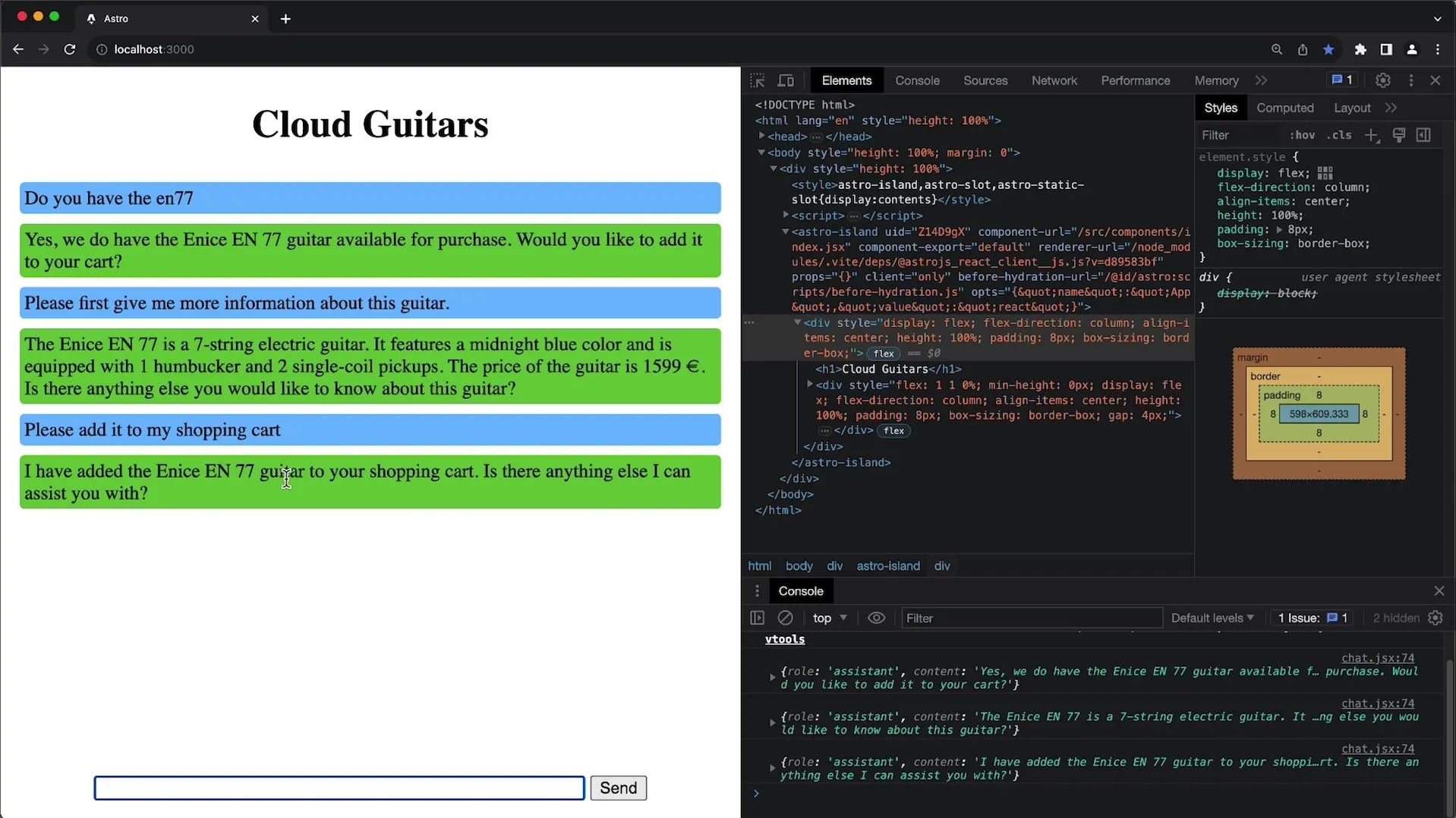
Step 8: Conclusion and Outlook
With this technique, you have successfully implemented a fuzzy product search that enables the AI to better handle user inputs. In our simple example, we only had a limited number of products, making the mapping process simple. However, with a larger database of more than 1000 products, it may be necessary to explore additional techniques such as embeddings to better capture similarities. This will help us efficiently search even in larger datasets.

Summary
In summary, this guide shows how you can implement a fuzzy product search with a precise workflow to make product searches easier for customers, even if they are not quite sure what the product is called. The changes to the search logic and parameter adjustments enable an efficient solution that is easy to implement and improves the user experience.
Frequently Asked Questions
How does the fuzzy product search work?The fuzzy product search returns all product names if no exact match is found in the search, allowing the AI to select the correct name.
What do I need to change in the "find product" function?You need to change the logic to return all product names if no exact match is found.
How do I test the new search logic?Enter a fuzzy product name, for example, "do you have the en77", and check if the correct product is found.
How does the AI handle hundreds of products?The AI can handle hundreds of products as long as the token limits are not exceeded, but for larger datasets, embeddings may be a better option.
Does the search work with large product databases?Yes, the basic logic also works with large product databases, but additional techniques may need to be used to ensure efficiency and accuracy.


